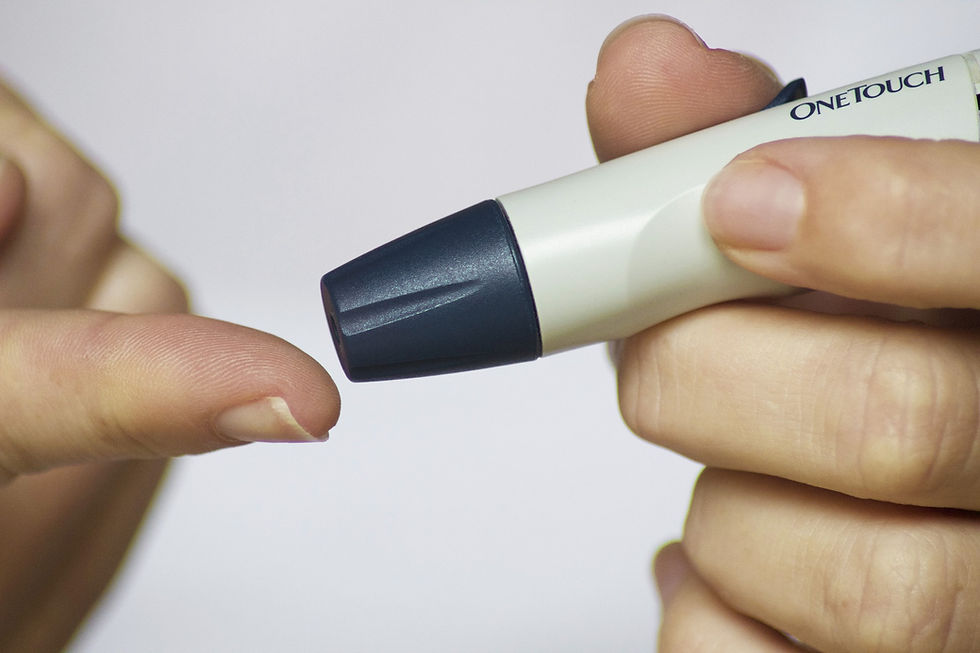Demystifying Tachycardia: What You Need to Know"
- Wesley Prent

- May 14, 2024
- 3 min read
Updated: May 24, 2024
Tachycardia, a term derived from Greek roots meaning "rapid heart," is a condition characterized by an abnormally fast heart rate. While it's normal for your heart to beat faster in certain situations such as during exercise or in response to stress, tachycardia occurs when the heart beats excessively fast even at rest. In this article, we'll delve into what tachycardia is, how it affects individuals, its causes, and the available treatments, including the role of pacemakers in managing this condition.

What is Tachycardia? Tachycardia is a condition where the heart beats at a rate higher than the normal resting heart rate, which is typically between 60 to 100 beats per minute. However, in tachycardia, the heart rate can exceed 100 beats per minute even when the person is at rest. This rapid heartbeat can lead to various symptoms and complications if left untreated.
Causes of Tachycardia: Tachycardia can be caused by a multitude of factors, including:
Heart abnormalities: Structural issues with the heart, such as congenital heart defects or damage from a heart attack, can disrupt the heart's electrical system and lead to tachycardia.
Abnormal electrical pathways: Problems with the heart's electrical signaling, such as those seen in conditions like atrial fibrillation, can cause the heart to beat irregularly and faster than normal.
Medical conditions: Certain medical conditions, such as hyperthyroidism, hypertension, or anemia, can increase the risk of developing tachycardia.
Stimulants: Consumption of stimulants like caffeine, nicotine, or certain medications can trigger episodes of tachycardia.
Effects of Tachycardia on Life: Living with tachycardia can significantly impact an individual's quality of life. Some common effects include:

Fatigue and weakness: The heart has to work harder to pump blood efficiently, leading to feelings of fatigue and weakness.
Dizziness and lightheadedness: Inadequate blood flow to the brain due to rapid heart rate can cause dizziness or fainting spells.
Shortness of breath: Tachycardia can impair the heart's ability to pump blood effectively, resulting in shortness of breath even with minimal exertion.
Anxiety and stress: The physical symptoms of tachycardia can contribute to feelings of anxiety and stress, further exacerbating the condition.
Treatment Options for Tachycardia: Treatment for tachycardia aims to control the heart rate and prevent complications. Depending on the underlying cause and severity of the condition, treatment options may include:
Medications: Beta-blockers, calcium channel blockers, and antiarrhythmic drugs are commonly prescribed to help regulate the heart rate and rhythm.
Cardioversion: In cases of severe or persistent tachycardia, cardioversion may be performed to restore a normal heart rhythm using electrical shock or medications.
Catheter ablation: This procedure involves using radiofrequency energy to destroy abnormal heart tissue responsible for causing rapid heart rhythms.
Implantable devices: For individuals with recurrent or life-threatening tachycardia, implantable devices such as pacemakers or implantable cardioverter-defibrillators (ICDs) may be recommended.
The Role of Pacemakers in Managing Tachycardia: Pacemakers are small, battery-operated devices implanted under the skin, usually near the collarbone, to help regulate the heart's rhythm. In the context of tachycardia, pacemakers can be programmed to monitor the heart rate and deliver electrical impulses to pace the heart at a normal rate when it beats too slowly or too quickly.

How Pacemakers Work: A pacemaker consists of two main components: a generator and leads. The generator contains the battery and electronic circuits that control the device's function. Leads are thin, insulated wires that connect the generator to the heart muscle.
When the pacemaker detects an abnormal heart rate, it delivers electrical impulses through the leads to stimulate the heart muscle, restoring a normal rhythm. This pacing action helps prevent episodes of tachycardia and ensures that the heart maintains an appropriate rate for optimal blood circulation.
Why Pacemakers Keep a Person Alive: Pacemakers play a vital role in keeping individuals with tachycardia alive by:
Preventing dangerous arrhythmias: By pacing the heart at a normal rate, pacemakers help prevent life-threatening arrhythmias such as ventricular tachycardia or fibrillation.
Improving symptoms: Pacemakers can alleviate symptoms associated with tachycardia, such as dizziness, fatigue, and shortness of breath, thereby improving quality of life.
Ensuring adequate blood flow: By maintaining a steady heart rate, pacemakers ensure that the heart can pump blood effectively to vital organs, preventing complications related to poor circulation.
Conclusion: Tachycardia is a common cardiac condition characterized by a rapid heart rate, which can significantly impact an individual's health and well-being if left untreated. Understanding the causes, effects, and available treatment options, including the role of pacemakers, is essential for managing this condition effectively and improving outcomes for affected individuals. If you experience symptoms suggestive of tachycardia, it's important to seek medical evaluation and treatment promptly to prevent complications and optimize heart health.
If you would like to be notified of future post, click subscribe above.




Comments